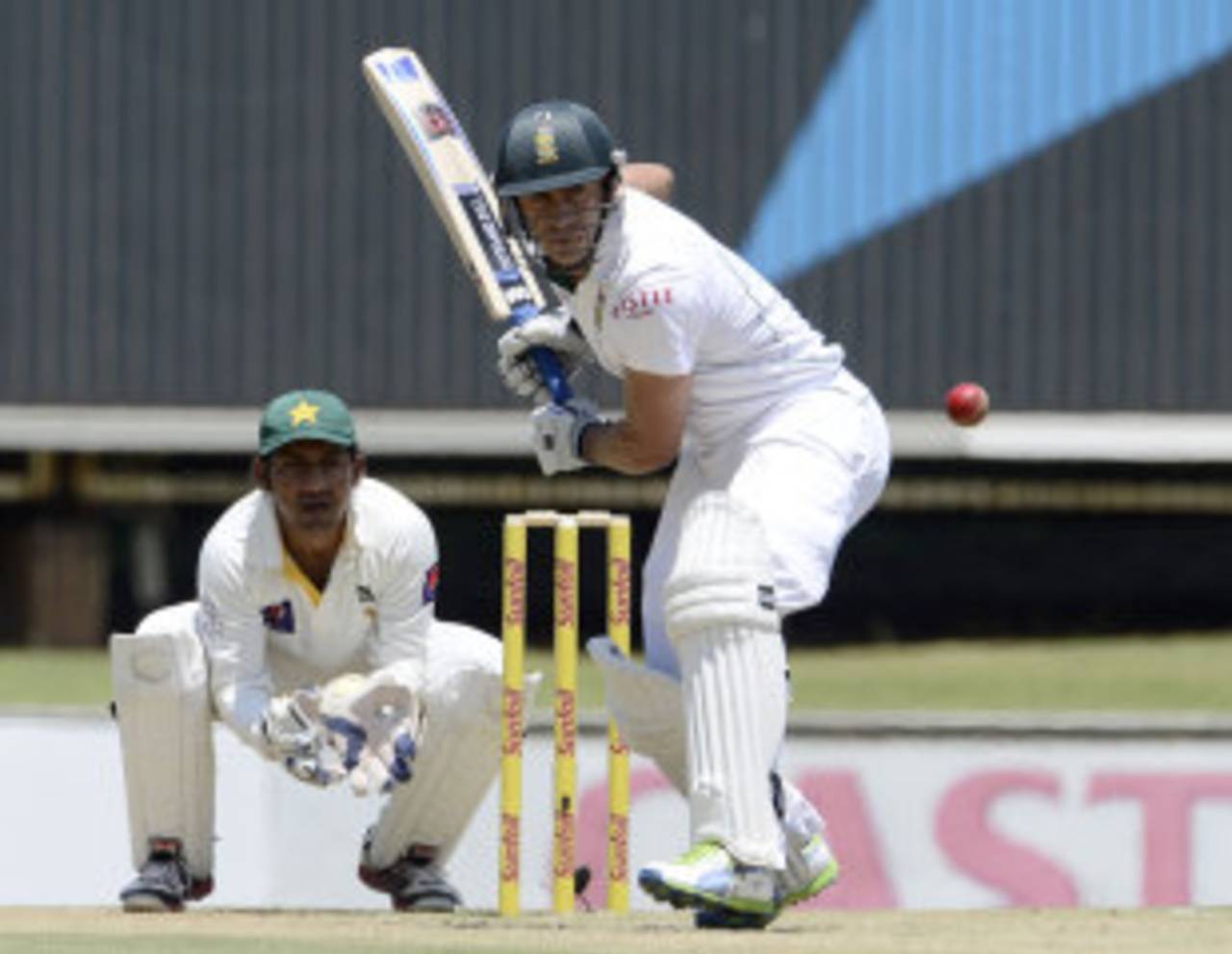If quality of depth is, as Graeme Smith insists, the key factor in South Africa's ability to play at a standard high enough to remain No.1 in the world, they had a chance to test that today. For the fourth time in five series, Jacques Kallis was injured and a contingency plan had to be made.
Kirsten has called Kallis a "two-in-one-player," which makes him sound like a fancy shampoo-conditioner combination but its real meaning is only understood by his actual absence. As South Africa learnt in New Zealand, to replace him really does take two players and a mindset shift.
In Wellington, they had to change the balance of their team as they picked a batsman (JP Duminy) and a bowler (Marchant de Lange) in Kallis' place. It meant leaving out the spinner (Imran Tahir). On other occasions, in England and Australia, South Africa have had to juggle the batting order to accommodate Kallis.
Managing Kallis is becoming trickier as age, not erosion of talent or lack of form, creeps up on him. Gary Kirsten confirmed he will no longer feature in bilateral ODI series but will be considered for the Champions Trophy and World Cup because those are two events he has expressed interest in taking part in. Kirsten said no much more can be asked of Kallis after 18 years of service to the country so the coach is "just happy when Kallis makes it through to a Test series."
Now, even that is a bonus. An injury which Peter Kirsten remembered afflicting him in his later years has come to haunt Kallis too and it serves as yet another reminder that the clock is ticking against him. For as long as Kallis can play, there is no doubt he will be selected but South Africa also have to confront the reality that one day his body may have the final say.
Today, they "got a sighting of that," as Hashim Amla put it in almost perfect circumstances. The series situation meant that South Africa could afford to be without Kallis. It is already won 2-0. The opposition also meant they could. Against an inexperienced bowling attack and with a tail that can wag as energetically as a puppy's on its first walk meant South Africa could be comfortable with only six frontline batsmen, not seven as has been their strategy recently.
Kyle Abbott was a straight swap for Kallis and Rory Kleinveldt the same for Morne Morkel, giving South Africa their usual four quicks with Robin Peterson as the slower bowling option. Lesson No.1: Life after Kallis may mean reverting back to a more traditional starting XI and not enjoying the luxury of an extra batsman if the bowling complement is to remain as is.
It also means the gap at No. 4 needs to be filled. Until two matches ago, it was thought that AB de Villiers would move a spot up and that was a concern. How would he handle the treble role of wicketkeeping, vice-captaincy and batting higher up? Already, he has admitted to feeling overburdened when doing all three in limited-overs matches.
That bring us to lesson No. 2: Faf du Plessis, not de Villiers, is being groomed for Kallis' spot. Du Plessis batted there at Newlands when Kallis had to move down the order because he was overbowled earlier and he has done it again now. "Faf fits in anywhere," Amla concluded. "Although he has only played a few Tests, he conducts himself as though he had played 50."
Maturity is du Plessis' standout characteristic. He had mountains of it in Adelaide when, on debut, he saved South Africa. He has since leapfrogged Dean Elgar to the No.6 spot, taken over as captain of the Twenty20 side, stood in as ODI leader and shown he has broad shoulders. If he is the eventual replacement at No.4, it will be a good move for South Africa.
Du Plessis' talent is obvious; he plays the game positively, has the ability to dig in and is strong on both front and back foot. Most importantly, he shows the potential to form part of the core in the top four that allows the middle order, and de Villiers in particular, to come in under minimal pressure.
When du Plessis was caught behind after lunch today, South Africa were 107 for 3, perhaps the most unstable situation de Villiers has been in recently with the exception of the first innings at Newlands in the last Test. Still, Amla was well set and Pakistan were out of ideas. Partners left de Villiers but he had a platform from which to build and he did so admirably. His innings was a combination of placement and timing as he found boundaries in the third man area three times through subtle guiding and beat fielders with a delicate precision.
A question remains over the No.6 batsmen. Despite his century against New Zealand, Elgar has not been convincing. That may be because he is playing out of position (he is actually an opener) but his uncertainty outside the offstump says otherwise. Jacques Rudolph and Ashwell Prince are considered spent forces but there are rumblings that the return of Duminy, who has three months to go before he will recover fully from his ruptured Achilles, will solve that problem.
To replace Kallis will be close to impossible as most, including Amla, know. "Jacques is an iconic player. You will always feel his absence," he said. But on the evidence of how South Africa have gone about doing that so far, there is something to suggest they will find a way to move on when the times comes.
Firdose Moonda is ESPNcricinfo's South Africa correspondent
